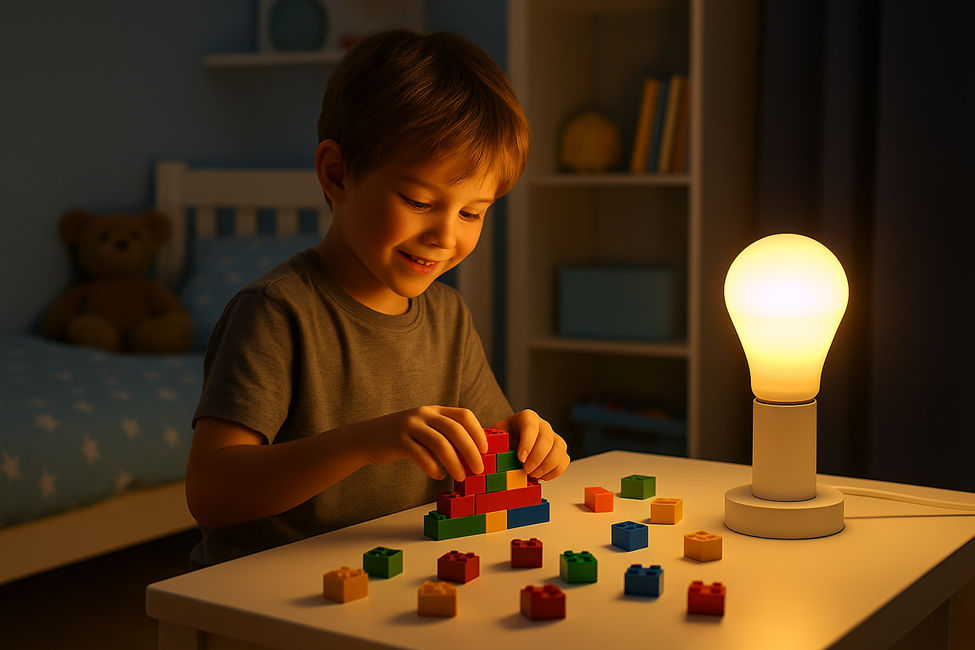Smart Lighting in Educational Spaces: Enhancing Learning Environments with MagicLight
- Mike Anderson
- Mar 19
- 2 min read
In today's rapidly evolving educational landscape, the integration of technology extends beyond digital devices and online platforms. One significant advancement is the implementation of smart lighting systems in educational institutions. These systems not only enhance the learning environment but also contribute to energy efficiency and overall well-being. Companies like MagicLight offer innovative solutions that can transform traditional classrooms into dynamic learning spaces.

Enhancing Learning Environments
Lighting plays a crucial role in influencing students' focus, concentration, and overall academic performance. Traditional fluorescent lighting, common in many schools, has been associated with issues such as eye strain, headaches, and reduced attention spans. In contrast, LED lighting, especially when integrated into smart systems, offers a more comfortable and adaptable visual environment. Research indicates that LED lighting can simulate natural daylight, positively impacting cognitive performance and helping students maintain better concentration in the classroom.
Energy Efficiency and Cost Savings
Educational institutions often face budget constraints, making energy efficiency a priority. Smart lighting systems, such as those provided by MagicLight, utilize energy-efficient LEDs that consume significantly less power than traditional lighting solutions. LEDs last as much as 25 times longer than incandescent lights and are up to 44% more efficient than fluorescent tubes. This reduction in energy consumption translates to substantial cost savings over time, allowing schools to allocate resources to other essential areas.
Customization and Flexibility
One of the standout features of smart lighting is its adaptability. Teachers and administrators can adjust lighting levels and color temperatures to suit various activities and times of day. For instance, brighter, cooler lighting can be used during lectures to promote alertness, while warmer, dimmer settings may be more appropriate for group discussions or individual work. MagicLight's products offer such versatility, allowing educators to create optimal lighting conditions that enhance the learning experience.
Health and Well-being
Beyond academic performance, lighting significantly impacts students' health and well-being. Proper lighting reduces eye strain and fatigue, contributing to a more comfortable learning environment. Additionally, exposure to appropriate lighting can influence mood and behavior, leading to improved classroom dynamics. By implementing smart lighting solutions, schools can create environments that support both the mental and physical health of students and staff.
Integration with Other Technologies
Smart lighting systems can seamlessly integrate with other technologies, offering features such as automated scheduling, occupancy sensing, and compatibility with voice-controlled devices. MagicLight's products, for example, are compatible with Amazon Alexa and Google Assistant, allowing for hands-free control and further enhancing the user experience.
Case Studies and Real-world Applications
Several educational institutions have successfully implemented smart lighting systems, witnessing tangible benefits. For example, a university integrated smart lighting with their smartphone app, helping students find available rooms or navigate to their classes, thereby enhancing campus efficiency and student satisfaction.
Conclusion
The adoption of smart lighting in educational spaces represents a significant step toward creating more effective, efficient, and engaging learning environments. Companies like MagicLight are at the forefront of this transformation, offering products that not only meet the functional needs of educational institutions but also contribute to the overall well-being of students and staff. As technology continues to evolve, the integration of smart lighting solutions will undoubtedly play a pivotal role in shaping the future of education.



Comments